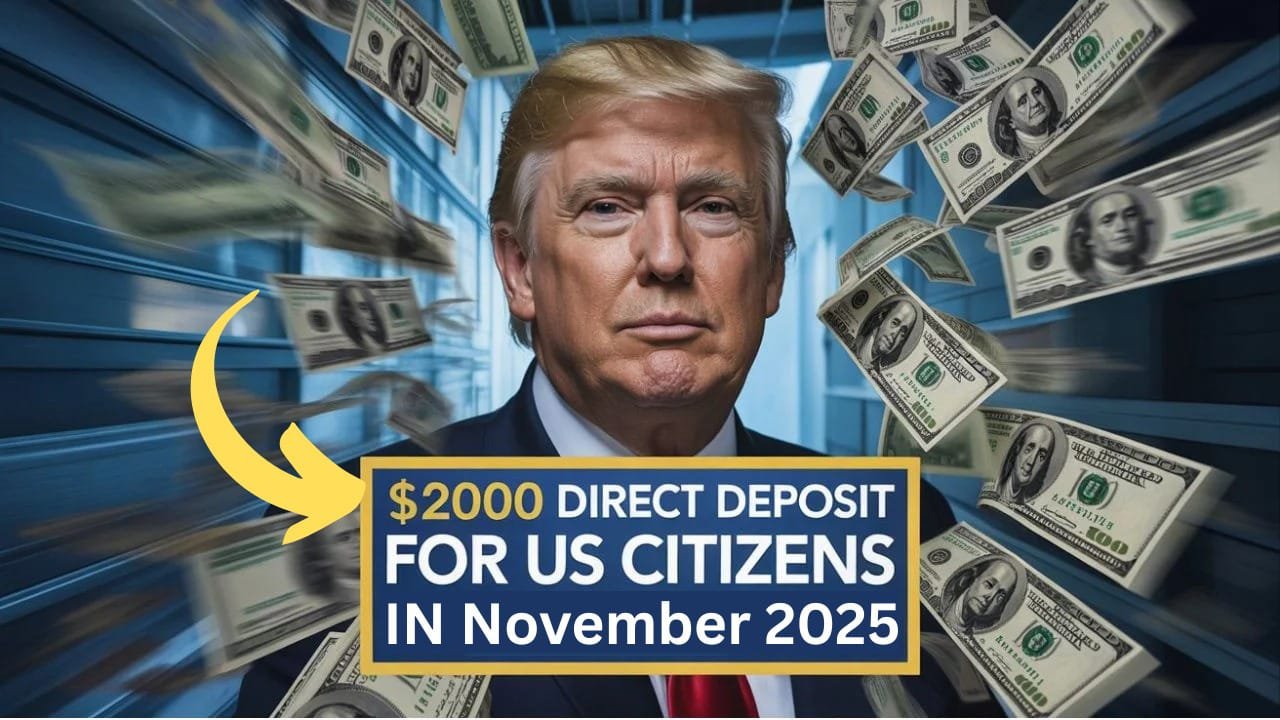As Americans face rising costs for groceries, housing, utilities, and healthcare in 2025, many families are hoping for further financial relief. One topic receiving considerable attention is the discussion surrounding a potential $2,000 direct deposit for eligible Americans in November 2025. While this payment hasn’t been officially approved at the federal level, several widely discussed proposals have brought the idea of relief payments in late 2025 into the spotlight.
This guide explains what’s known so far—who can qualify, how payments might be distributed, and what important IRS steps Americans should take to be prepared if the program goes ahead.
Why the November 2025 payment is being considered
Economic data for 2024 and 2025 shows that many families, senior citizens, and those on fixed incomes are feeling the pressure of inflation and slow wage growth. Although the economy has gradually stabilized, daily expenses remain significantly higher than in previous years.
Lawmakers discussing the November 2025 payment say its goals will be:
- Provide short-term relief to low- and middle-income families
- Help senior citizens struggling with fixed income limitations
- Stimulate the local economy during the holiday season
- Reduce winter heating and utility costs
As discussions continue, citizens are paying close attention to how such a payment could work.
Potential Eligibility Requirements
While the proposal is not yet official, eligibility discussions have followed patterns seen in previous federal economic relief programs. Based on those models, the following groups would likely qualify if the payment is approved:
1. U.S. Citizens and Legal Residents
Individuals must have a valid Social Security number and be U.S. citizens, permanent residents, or eligible resident aliens.
2. Income Thresholds
Previous stimulus programs used income caps to determine eligibility. A similar structure may apply:
-
Single filers: income up to $75,000
-
Head of household: up to $112,500
-
Married joint filers: up to $150,000
Those earning above the thresholds may still qualify for a reduced payment.
3. Recent Tax Return on File
The IRS would likely use 2023 or 2024 tax returns to determine:
-
Income level
-
Bank account details
-
Mailing address for checks
4. Benefit Recipients (Automatic Eligibility Likely)
During previous stimulus rounds, federal beneficiaries received payments automatically. If the new payment is approved, these groups may also be included:
-
Social Security (SSA)
-
Social Security Disability Insurance (SSDI)
-
Supplemental Security Income (SSI)
-
Veterans Affairs (VA benefits)
-
Railroad Retirement beneficiaries
These citizens may not need to take any additional steps.
How Payments Will Be Distributed
If this proposal becomes official, the IRS and U.S. Treasury will distribute payments using the same system used for previous Economic Impact Payments.
1. Direct Deposit
Most eligible Americans with bank information on file will receive payments first via direct deposit. This is the fastest method, with funds often arriving within a few days of release.
2. Paper Checks
For those who don’t have direct deposit set up, the IRS will mail a physical check to the address on record. This typically takes longer—often several weeks.
3. Prepaid Debit Cards
In previous relief efforts, debit cards were issued to certain recipients. This option may return depending on distribution volume and IRS capacity.
Estimated Payment Timeline
Although November 2025 is the proposed month, the exact delivery time will depend on:
- Final Congressional approval
- Treasury funding schedule
- IRS processing timeline
If approved in late summer or early fall, direct deposits could begin arriving by mid-November, with checks arriving shortly thereafter.
IRS Instructions: How to Prepare Now
Even if a payment hasn’t been confirmed, Americans can take simple steps to be prepared:
1. File all required tax returns
If you haven’t filed your 2023 or 2024 taxes, do so immediately. The IRS cannot issue a payment without current records.
2. Update direct deposit information
If you’ve changed banks, make sure your new routing and account number are included in your next tax filing.
3. Verify your mailing address
Make sure your address is up-to-date so your paper check isn’t delayed.
4. Avoid scams
The IRS will never call, email, or text asking for personal information to “issue a payment.”
5. Follow official sources
Check for updates only on IRS.gov or other verified government websites.

